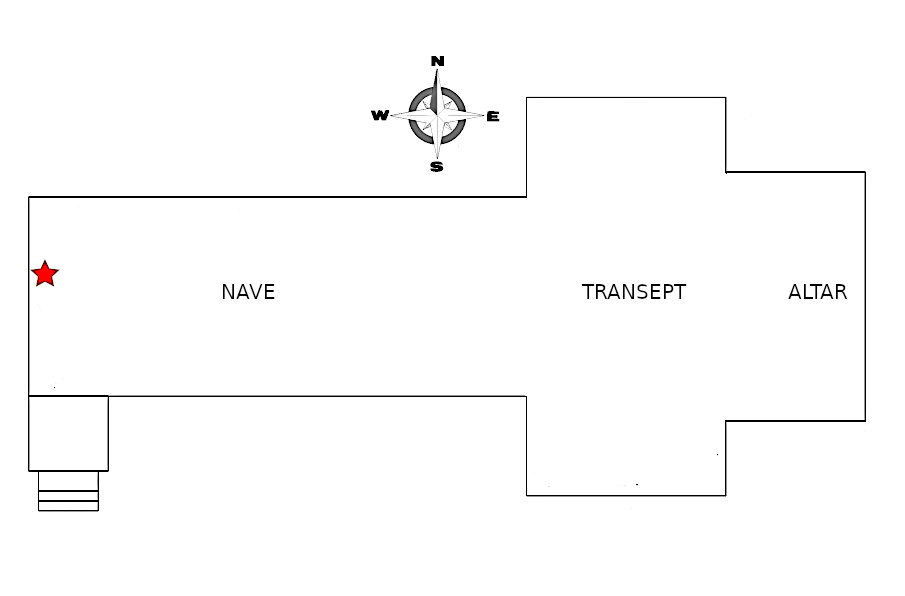
213 Madison Ave, Lakewood, NJ 08701-3316
732-367-0933

 |
 |
 |

| quatrefoils | four-lobed shapes for the four gospels (Matthew, Mark, Luke & John); the four cardinal virtues (temperance, justice, prudence & fortitude - St Ambrose, late 300s) | |||
| 8-pointed star | 8 - the regeneration of man. Jesus was given his name when he was 8 days old. Baptismal fonts have 8 sides. |
God waited patiently in the days of Noah, during the building of the ark, in which a few, that is, eight persons, were saved through water. And baptism, which this prefigured, now saves you . . . through the resurrection of Jesus Christ,
We know, as a fact, that from the earliest times, baptisteries and fonts were octagonal. We know also that the reason assigned, if not by S. Ambrose himself at least by one of his contemporaries, for this form was, that the number eight was symbolical of Regeneration. For as the old Creation was complete in seven days, so the number next ensuing may well be significative of the new.
Rationale Divinorum Officiorum, 1893 translation
In 1884, when the first part of All Saints' was built, the art of stained glass in the United States was less than 30 years old. Most stained glass windows in non-Roman Catholic churches were "abstract" designs. Since the Reformation, the new Protestants were hostile to elaborate art and decoration. Even in the Roman Catholic countries, the Counter-Reformation called for simpler religious buildings. During the Thirty Years War, Cardinal Richelieu ordered all castles and palaces in Lorraine razed. Their destruction saw an end to the glass workshops that centered in the area. At this time colored glass was very scarce. The little decorative glass that was produced was mostly small heraldic panels for city halls and private homes. Stained glass that had been so popular just a few years before was no longer in demand. The glass craftsmen were in great misery, pushing their barrows from place to place in search of work. The English Parliament even ordered all images of the Virgin Mary and the Trinity removed from churches. The Puritan principles of the Commonwealth inspired English adherents to smash stained glass windows with vigor. Thou shalt not worship any graven images.
It wasn't until the 1890's that stained glass windows went from abstract designs to illustrated "narratives" drawn from the Bible.
"History of Stained Glass", Stained Glass Association of America